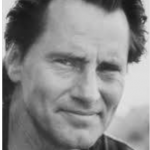 It’s been a pretty creative period for me lately. A new play, a new film, some music, etc. And, I must say, that I love creating. Not only art, but almost anything. Creating, for me, is the best approach to anything in life, cooking, working with clients, writing blogs.
It’s been a pretty creative period for me lately. A new play, a new film, some music, etc. And, I must say, that I love creating. Not only art, but almost anything. Creating, for me, is the best approach to anything in life, cooking, working with clients, writing blogs.
The reason I mention this is that I want to share a good thing. But, we are not talking about a simple thing. In fact, the creative process works on several levels simultaneously. Of course, at its most basic level it is understanding what it is you want to create. But it is also being aware of where you are in the process, the desired state in relationship to the actual state. In other words, structural tension. That is only the beginning of the process. It sets up the framework for further development. Structural tension motivates action. And the action is not a shotgun approach in which you try everything in sight, but rather target a strategy in which there is an economy of means, a type of mathematical elegance.
Forging elegant strategies is not something that usually happens when you are a beginner. It takes a level of experience over time. The more you create, the more elegant the process becomes. At first, there will be lots of false starts, dead ends, missteps. Later, your skill develops, and there comes a level of mastery with most things in which your ability and capacity to create grows and develops. As you create more and more of what you want, your aspirations go up. The new aspirations evoke the need for more and more technique, and learning how to accomplish that new level becomes the norm. One thing that is mastered is how to learn.
Some creations are solo flights, but many of them are working with others. Often, working with others is my favorite form of creating. Of course, this is when they too are in a generative/creative orientation, where we can join together to bring about the outcome we want. Solo or with others, creating is so different from anything else.
What else is there? For many people, their lives are filled with problem solving. Rather than create, they are busy trying to fix what is wrong. There is no shortage of problems, so, if you happen to solve one, there is always another one ready to take over. You can solve all of your problems and still not have what you want. There is a difference between getting rid of what you don’t want, and creating what you did want.
Another approach to life is, what I described in my book The Path of Least Resistance, the reactive/responsive orientation. Here, circumstances drive your actions. In the responsive side of the coin, you look for the right way to behave. In the self-help world, you will find a lot of prescriptions of how to behave. Be more this way, be less that way. Be kind, gentle, non-judgmental. Be less critical, selfish, neurotic. It is easy to tell people how to behave. It is much more complex to understand why they behave the ways they do. Next time you see a list of proper behavior, realize it comes from the “here’s how to respond” ideal. You’ll notice there is little if any understanding of why people do what they do. That is the realm of structural dynamics in which we understand that the underlying structure of anything will determine its behavior.
If you don’t want to fall into the party line by responding “properly,” you may find yourself reacting. This takes many forms. You may seem to have a chip on your shoulder, and life feels unjust and against you. Or you may have a more subtle approach, using wit and sarcasm to give extreme contempt for what seems like an unfair game.
React or respond is not creating. Nor is creating the right way to react or respond. It is just a great thing to do in life. The world will be as it is. Most of us are not in positions to impact that directly. But there are things we want to bring into being. Our human spirit, no matter what the circumstances, is to create. Too often, we get the wrong impression from our society, which makes life about adopting the right behavior, the right belief, the right purpose, the right defense against harm, the right tribe with which to belong, the right politics, the right things to eat, the right clothes to wear, the right way to cut your hair, and on and on it goes.
The creative process is the most successful process for accomplishment in history. And when you are in the process, easy or hard, inspired or frustrating, you have a level of involvement in life that is magnificent.
(Painting by Anneli Curnock)












